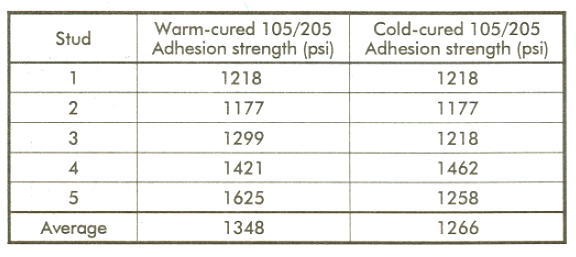
By Captain James R. Watson
Many shops are heated only while working on the project. Often a bonding application is allowed to cure after the furnace is turned down and the shop cools off overnight. The question arises, does this temporary suppression of the cure affect adhesion.
For a less-than-ideal scenario, we temporarily placed curing epoxy directly into a cold environment (as opposed to a slowly cooling shop) and tested its adhesion against samples bonded and cured in ideal conditions.
Resin and hardener were room temperature prior to mixing and applying. A 2024T alloy aluminum plate was used as the substrate. Standard bonding techniques were used for all elements except the bond to the substrate. Testing was conducted as follows:
Half of the plate was sanded and etched with 860 Aluminum Etch, then coated with 3 mils of WEST SYSTEM® 105 Resin/205 Fast Hardener, at 68°F. It was then placed in a 37°F chamber overnight. The following day, the other half of the plate was abraded, etched and coated with 3 mils of 105/205 and allowed to cure for three days at 68°F.
After three days, both sides were scrubbed with an abrasive pad and water. Five PATTI test studs were bonded to the coating on each side of the plate with 105/205 epoxy and allowed to cure for seven days at 68°F.
Tensile adhesion was measured using the PATTI extraction test, which measures the force required to pull the stud from the surface. The following results were recorded:
Conclusion: A temporary suppression of the cure by subjecting the curing epoxy to cold temperature did not have a significant effect on adhesion. Keep in mind that this was not a test of a continuous complete cure at a cold temperature.





